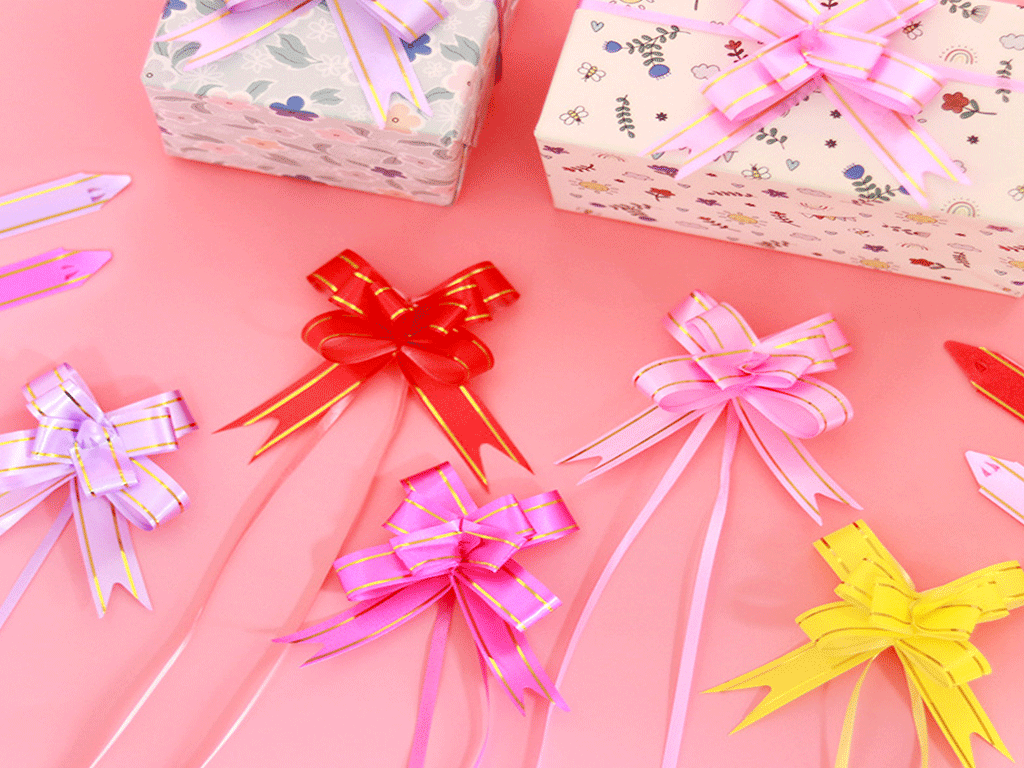The Origin and Evolution of Gift Ribbon Bows
1. A Journey Through Time: The History of Ribbon Bows
Ribbon bows can be traced back to ancient Rome, where nobles used dyed linen strips to decorate offerings. In the 17th century, the French royal court developed this into the “art of the bow.” The royal gift wrapper for Louis XIV invented the prototype of the modern ribbon bow by folding silk into three-dimensional petal shapes. After World War II, the American company Hallmark commercialized pre-made ribbon bows for the first time, bringing this decorative element into the mainstream consumer market.
2. The Craft Behind the Beauty: Production Techniques
Traditional handmade ribbon bows follow four steps: cut – fold – glue – shape:
- Cut satin ribbons at a 45° angle to prevent fraying
- Use a specialized flower-folding tool to shape petal curves
- Hot glue is used at key points to maintain a three-dimensional form
- Finally, fix the shape with pearl pins for 24 hours
Modern machine-made bows use PET materials and are formed in one step through high-temperature molding. They are much easier to use—just pull from the center to form a bow, then use double-sided tape to secure it to the gift box.
3. Cultural Symbolism
Different designs carry unique meanings:
- Single-layer ring: Symbolizes “completeness” in Chinese culture
- Double-layer bow: Represents eternal commitment in the West
- Spiral star: Serves as a protective symbol in Middle Eastern cultures
- Tassel style: Common in traditional East Asian weddings
A 2023 special exhibition at the British Museum revealed that 78% of recipients worldwide keep beautiful ribbon bows as keepsakes.
4. The Eco-Friendly Trend
Recently, biodegradable ribbon bows have emerged. However, due to high production costs, they have not yet seen large-scale adoption.
In summary, ribbon bows not only enhance the quality and presentation of gifts but also serve as an important emotional bridge that strengthens personal connections.
